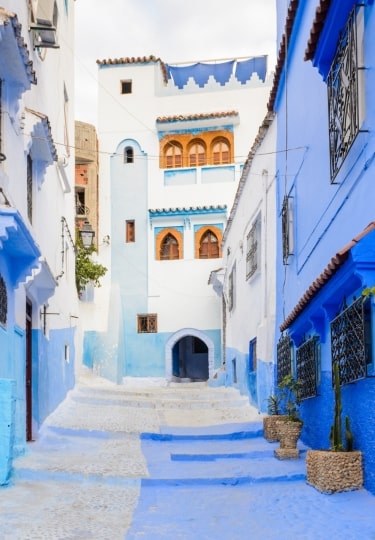Casablanca is Morocco’s largest city, and Tangier its most cosmopolitan. Together, they offer a wide choice of things to do in Morocco by combining the best the country has to offer.
Both are port cities, with the mix of peoples and cultures that history has brought since Phoenician and Roman times. North African, Portuguese, French, American and many other influences can be seen in the food, architecture, and shopping.
Old mosques stand near modern malls, and traditional souks sell the latest mobile phones beside detailed handcrafts. Linking them all is a friendly people whose hospitality is genuine and deep.
Here are some of the best things to do in Morocco.
Have a Mint Tea in Casablanca’s Medina
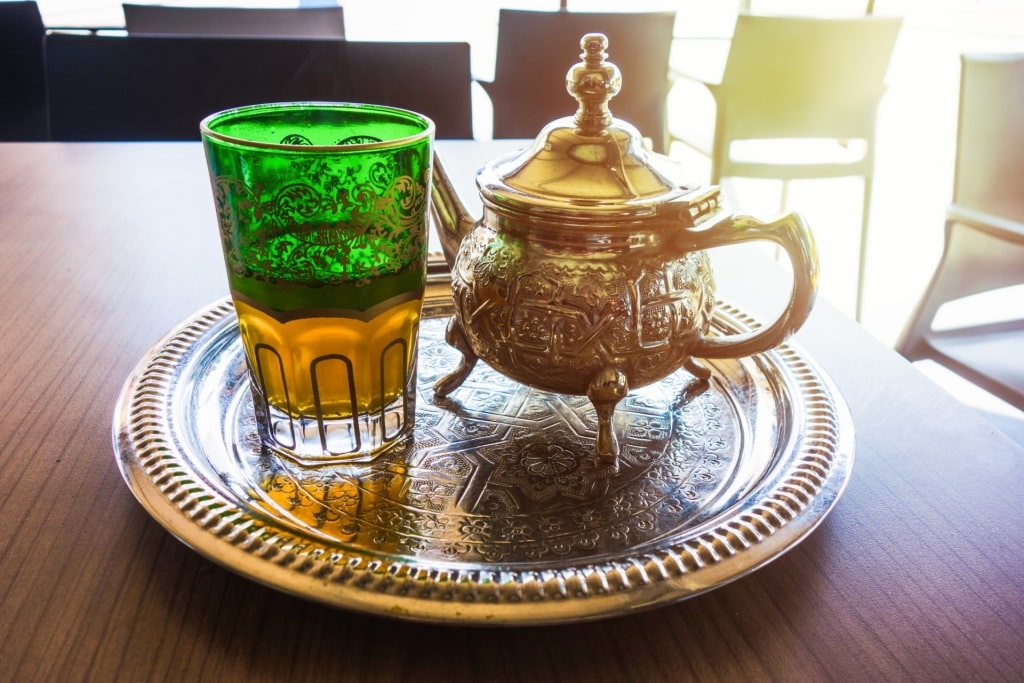
Tea
Casablanca’s Old Town is a neighborhood of narrow streets and family homes. Its shops are aimed more at locals than visitors, and just as interesting for it.
Most shops specialize in clothes, shoes and household goods, but there are still some areas selling local crafts. The old architecture is also of interest, particular if it’s your first visit to Morocco.
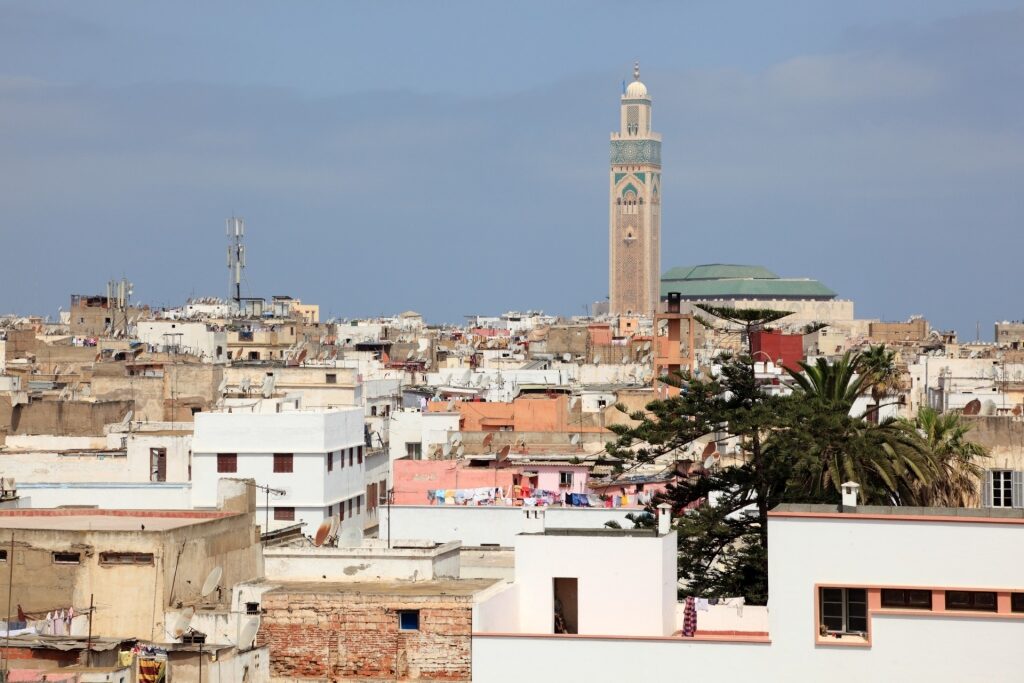
Old Medina, Casablanca
Look out for the scooters zipping around, and the large wooden carts being wheeled through the tiny alleys. Take it all in by finding somewhere to enjoy fresh pastries and a piping hot mint tea.
Looking up, you have an idea of what Casablanca (“White House”) looked like before the French arrived. They built the New Medina to combine the best of European and Moorish design, bringing a modern drainage system, but demolishing many ancient buildings.
Haggle in Souq Habous
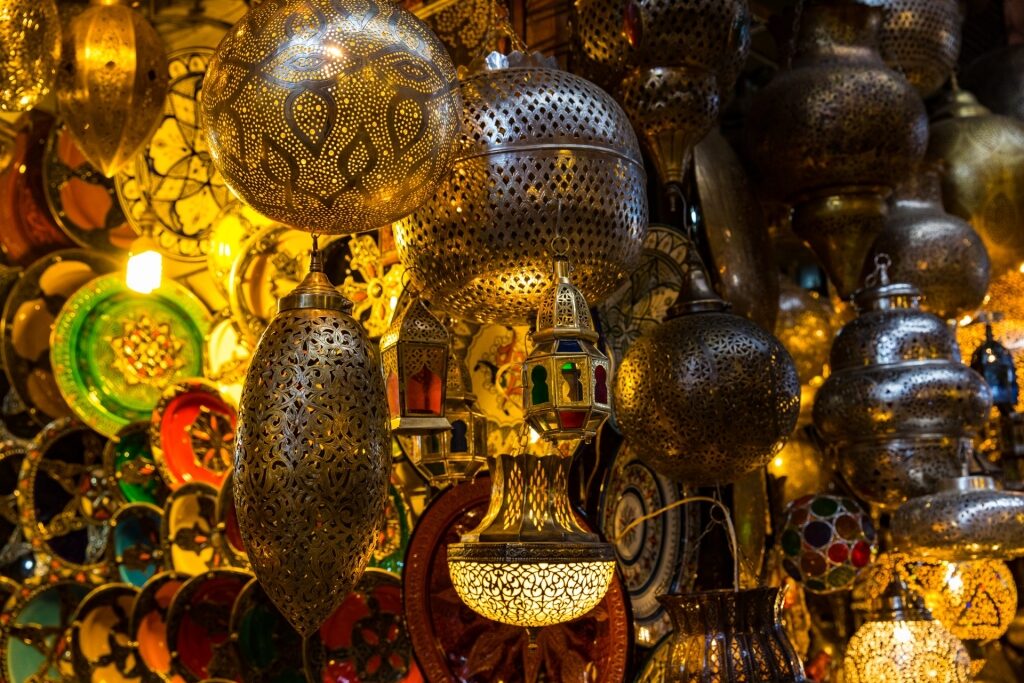
Market in New Medina, Casablanca
Casablanca’s New Medina, better known as Quartier Habous, is a picturesque area of streets lined with arched porticos. Its shops sell an exotic, tempting choice of Moroccan crafts, clothing and furnishings.
This is the place to go to find bright yellow leather slippers, a colorful rug, or a finely-worked brass lamp. The smell of leather bags and coats mixes with the scent of spices.
Haggling over the price is expected and part of the experience. Don’t start unless you sincerely want something, and prepare for a friendly battle of wills.
Cycle (or Walk) the Corniche
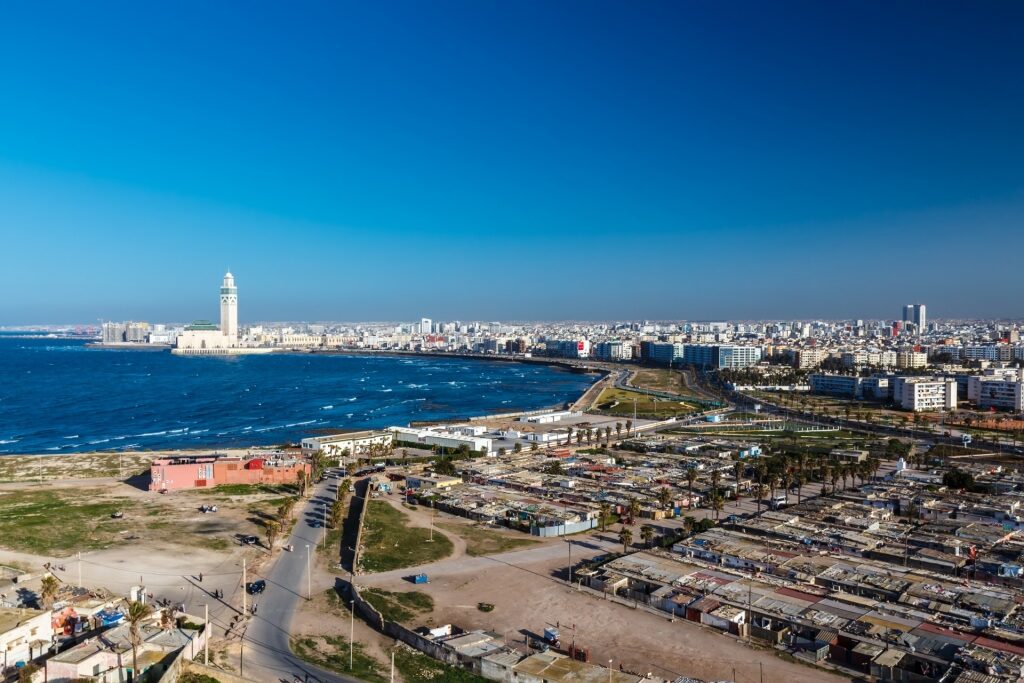
Corniche, Casablanca
Casablanca’s seaside promenade has the Atlantic Ocean on one side and the city on the other. You can walk it, but cycling is a better way to see more while hopefully generating your own cooling sea breeze.
If you do get too hot, there are several beach clubs where you can dip a toe in water, enjoy a cold drink, or even take a camel ride on the sand. On the other side, you could duck into one of the luxury hotels or restaurants.
The Corniche showcases modern Casablanca, nowhere more so than in the massive Morocco Mall. One of the largest shopping centers in Africa, it even has a huge indoor aquarium.
Read: Best Beaches in Morocco
Be Awed by Hassan II Mosque
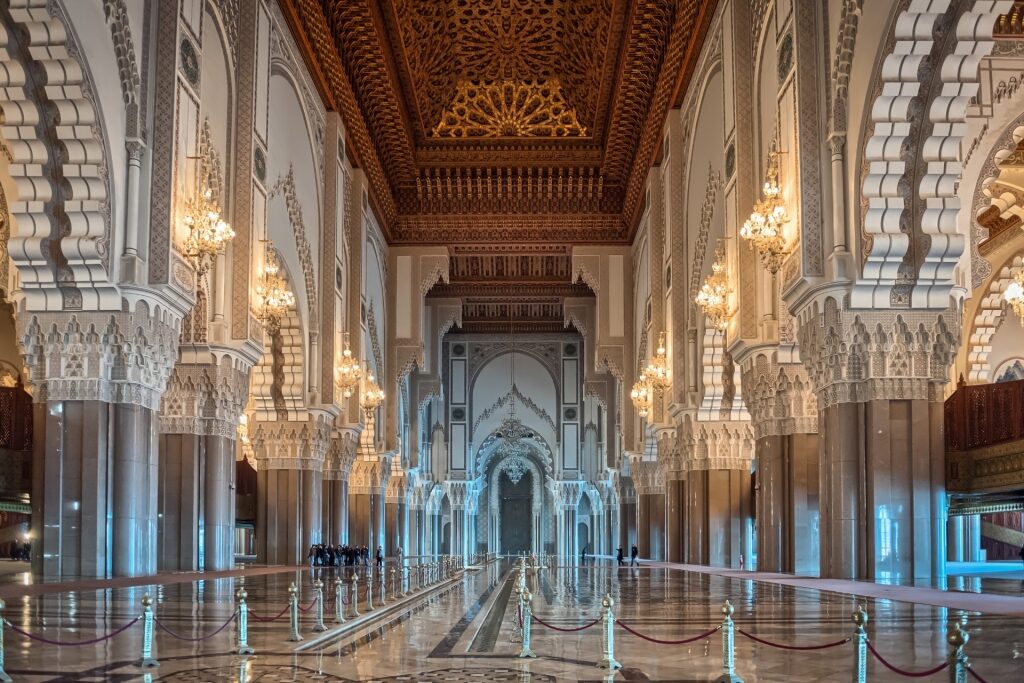
Hassan II Mosque, Casablanca
Opened in 1993, this grand mosque in Casablanca is notable for its 690 foot-high minaret. Then the tallest in the world, it is still the second highest.
Thousands of Moroccan artisans worked on the beautiful wood carving, finely detailed mosaics, and handwoven carpets. It’s a showcase of the finest in craft skills.
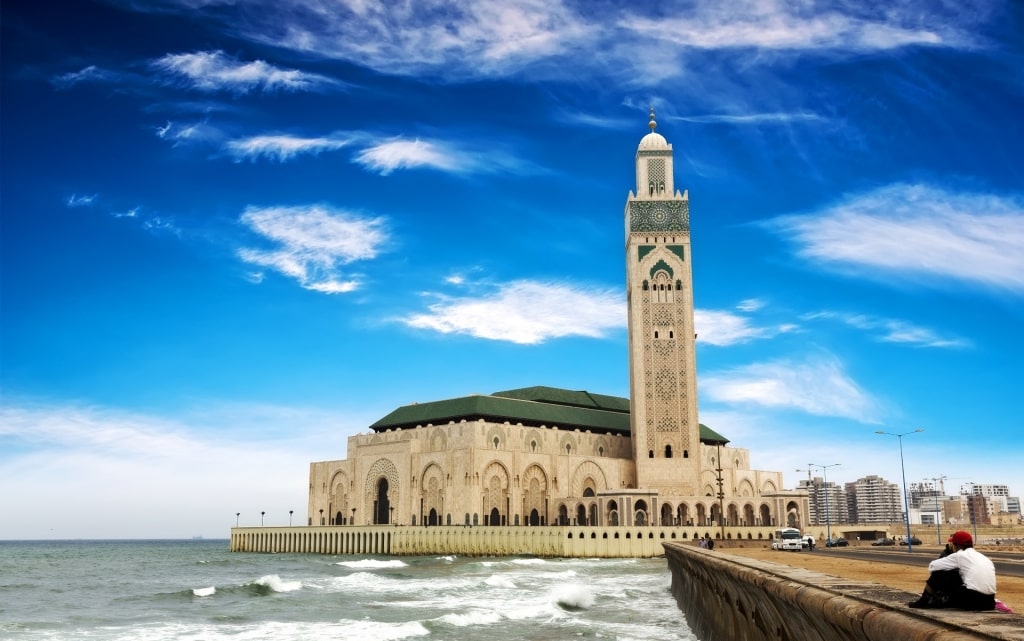
Hassan II Mosque, Casablanca
The mosque is built out to sea on a promontory, giving up 100,000 worshippers the benefit of cooling ocean breezes. The roof is also retractable, allowing a view of the stars during evening or early morning prayers.
Send a Postcard From La Poste Centrale
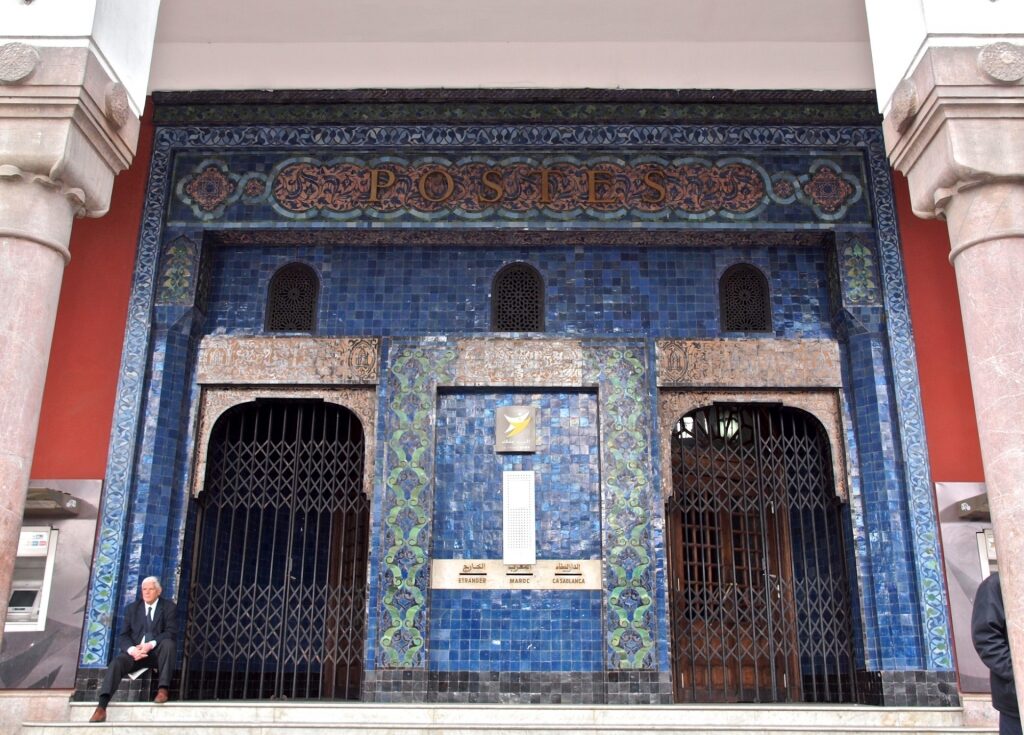
La Poste Centrale Photo by Sandra Cohen-Rose and Colin Rose on Flickr, licensed under CC BY-SA 2.0
Under the French Protectorate (1912-1956), Casablanca was given a Paris-style radial plan for its streets. The Central Post Office, built in 1918, is a showpiece of the architectural heritage of those times.
Its style is Neo-Moorish, a mix of art nouveau and North African features. Architect Adrien Laforgue is said to have been inspired by the main post office in Algiers and you can certainly see the influence.
It stands on Place Mohammed V, from where its beautiful mosaic work will catch the eye. Step inside to see the equally fine ceiling – and why not send a postcard while you’re there?
Explore the Caves of Hercules
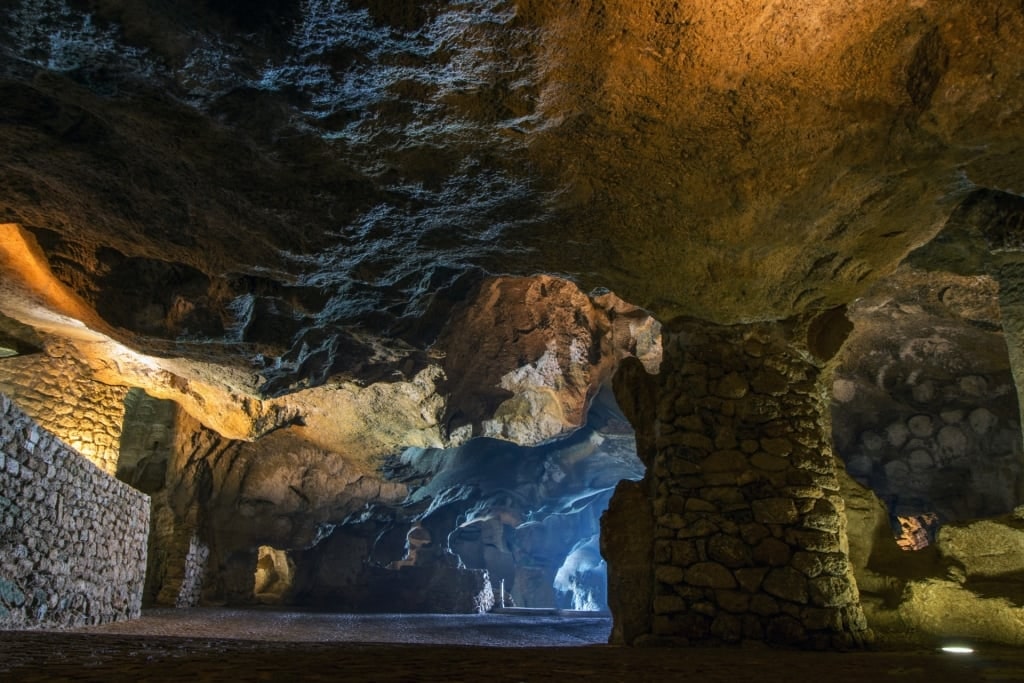
Caves of Hercules, Tangier
A short drive from Tangier, Cape Spartel is the most north-western point of mainland Africa, marked by a picturesque lighthouse. Across the Strait of Gibraltar lies Spain, a gap marked by the Pillars of Hercules in mythology.
While at the cape, you will want to see the Caves of Hercules, a natural cave enlarged by years of quarrying for millstones. Its first inhabitants have been dated to 6000 BCE but it’s now as notable for the patterns in the rock left by the quarrymen.
The cave originally opened only to the sea, but later gained a landward entrance. That opening to the Mediterranean is remarkable for having the shape of Africa.
Admire Casablanca Cathedral
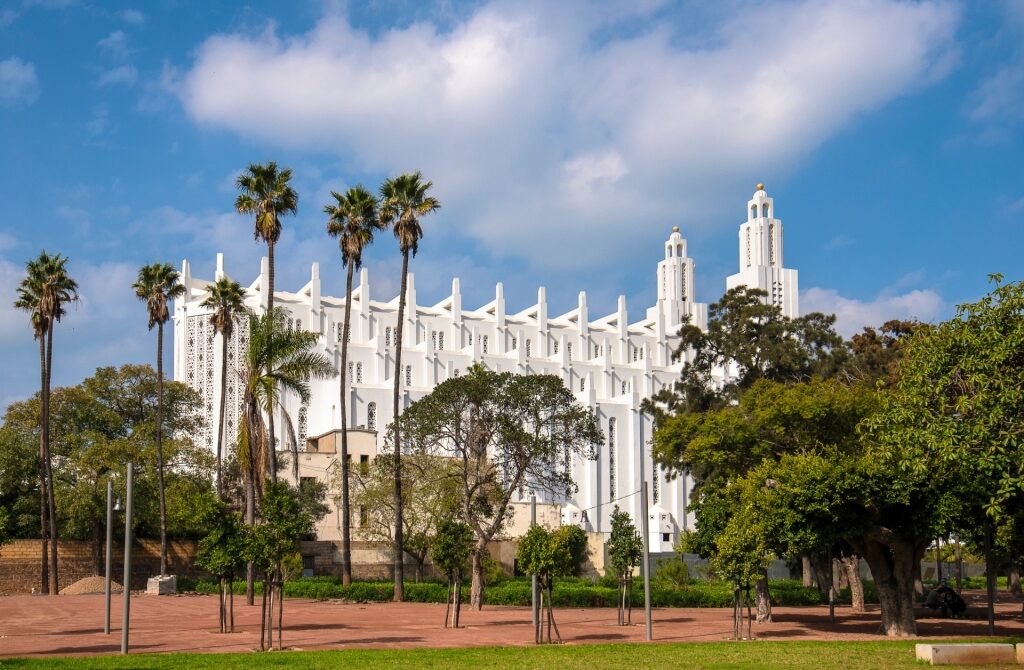
Casablanca Cathedral
Designed in neo-Gothic, neo-Moorish style in 1930, the Église du Sacré-Cœur took more than 20 years to finish. It’s an impressive building, usually called Casablanca’s “Cathedral” even though it was never actually one (which means it was never the seat of a bishop).
French rule ended soon after it was finished, and the building no longer serves a church. It’s now used as a cultural center, concert and exhibition hall, and occasional market hall.
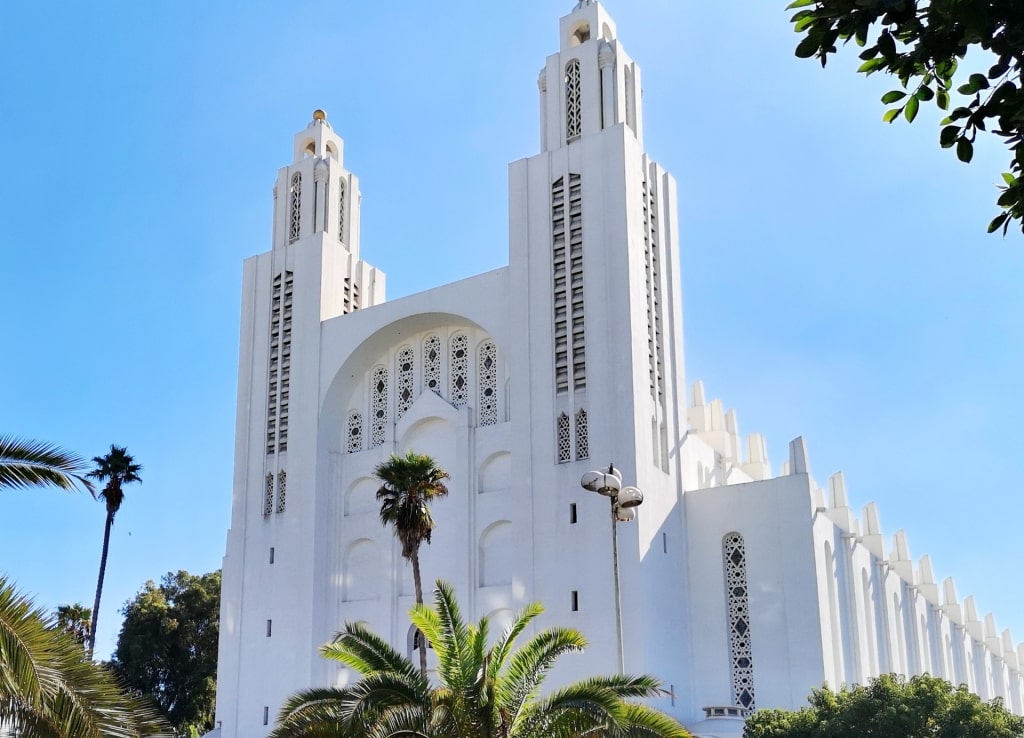
Casablanca Cathedral
The striking white exterior, with its typical flying buttresses, is complemented by striking stained glass windows. Designed by artists from the French city of Chartres, they remain as inspiring and colorful as when they were first unveiled.
Spend a Day in the Blue City
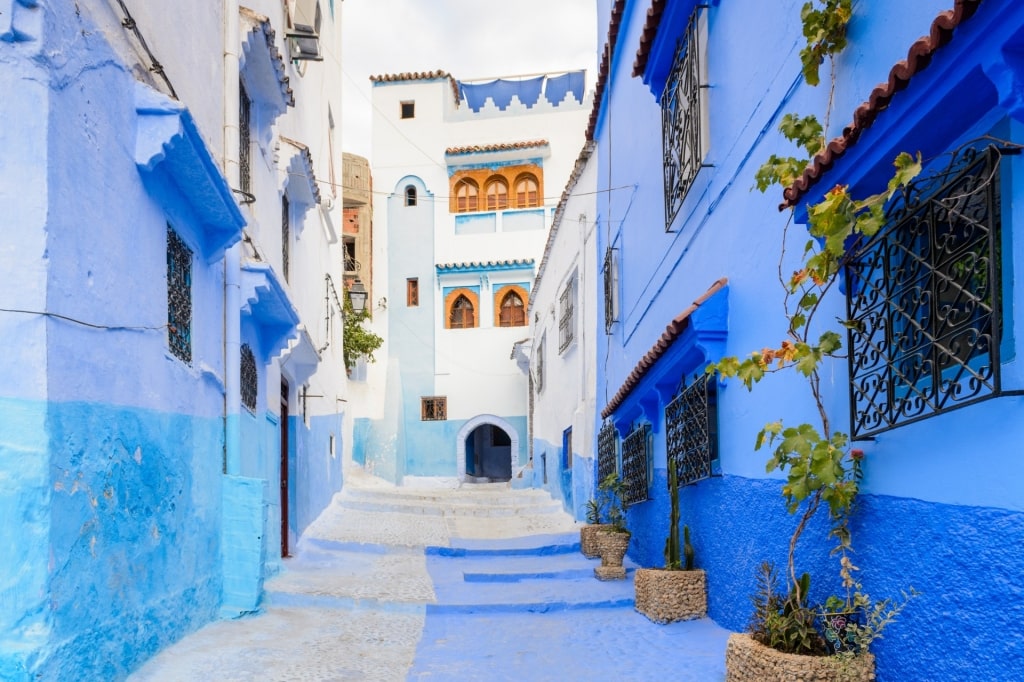
Chefchaouen
In the 1930s, Jewish arrivals fleeing Nazism settled in the quiet town of Chefchaouen in the foothills of the Rif Mountains, two hours’ drive from Tangier. They started a custom of painting their houses blue, one soon taken up by their Muslim neighbors.
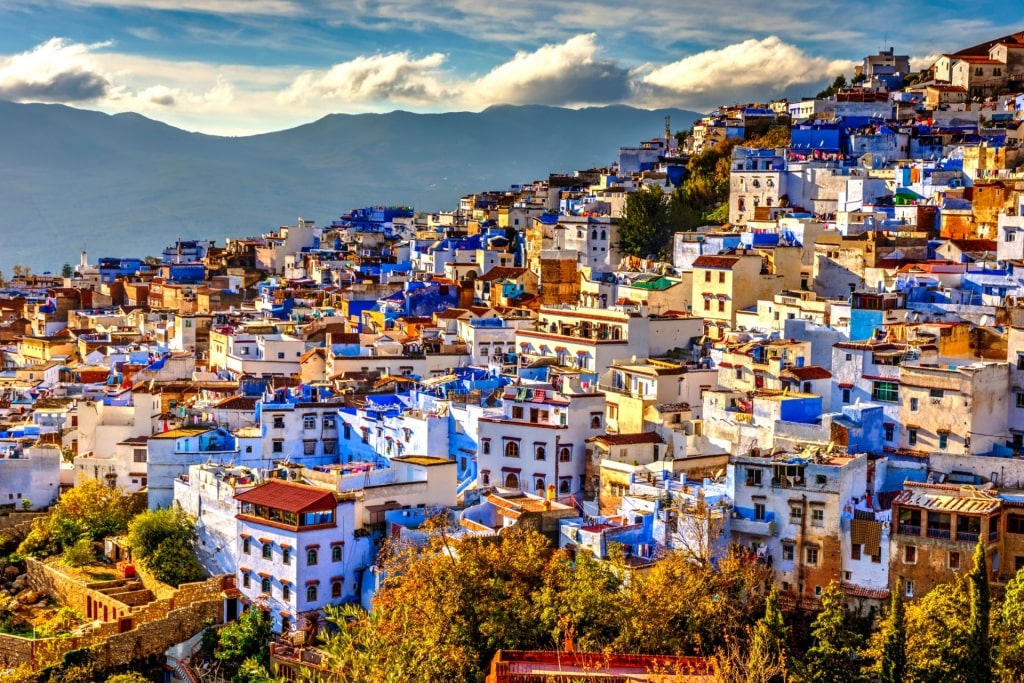
Chefchaouen
The many different hues, lit up by the sun against the stark mountains, have made the town beloved of photographers and other visitors. It’s also a place to shop for crafts and artwork from its many artisans.
Soak up the atmosphere of the souk, then relax in a café on Plaza Uta el-Hammam. Visit the Kasbah Museum to find out more about the town’s fascinating history.
Discover Casablanca’s Abderrahman Slaoui Museum
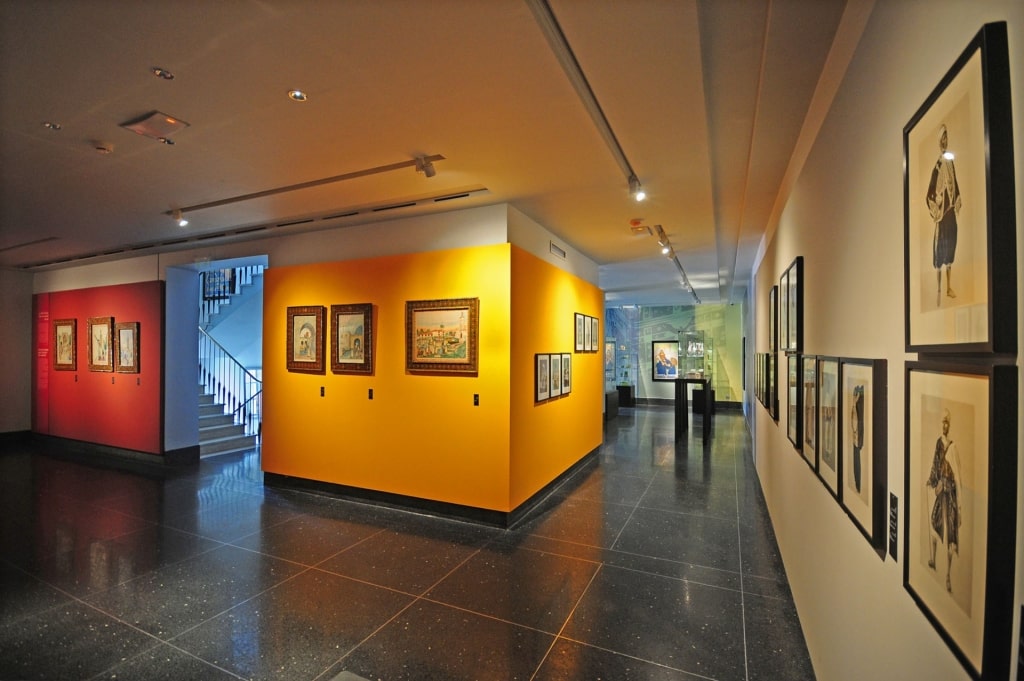
Abderrahman Slaoui Museum, Casablanca Photo by Musée Abderrahman Slaoui on Wikimedia Commons, licensed under CC BY-SA 3.0
This tiny showcase of Moroccan art near Casablanca Cathedral is well worth a look. It has an eclectic collection of treasures, all beautifully displayed.
Expect to see ceramics from Fez, beautiful cosmetics containers, and Moroccan Berber and gold jewelry. Vintage “Orientalist” posters make for a particularly interesting display.
Abderrahman Slaoui was a businessman from Fez who devoted his life to this collection. Displayed in his former mansion, it’s a very personal look into both the man and his love for Morocco.
Go Astray in Tangier’s Medina
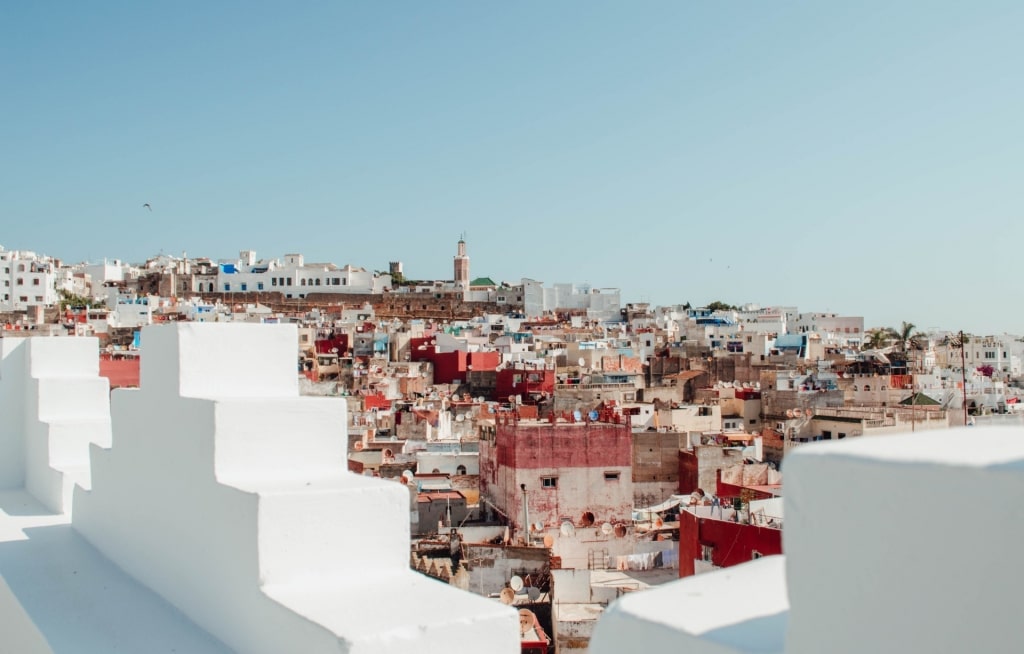
Old Medina, Tangier
Morocco is known for its intricate medinas, and Tangier’s Medina has been much modernized but still remains a fascinating mix of old and new, bounded by the walls left by the Portuguese. You might go astray in its alleyways, but you should never get lost.
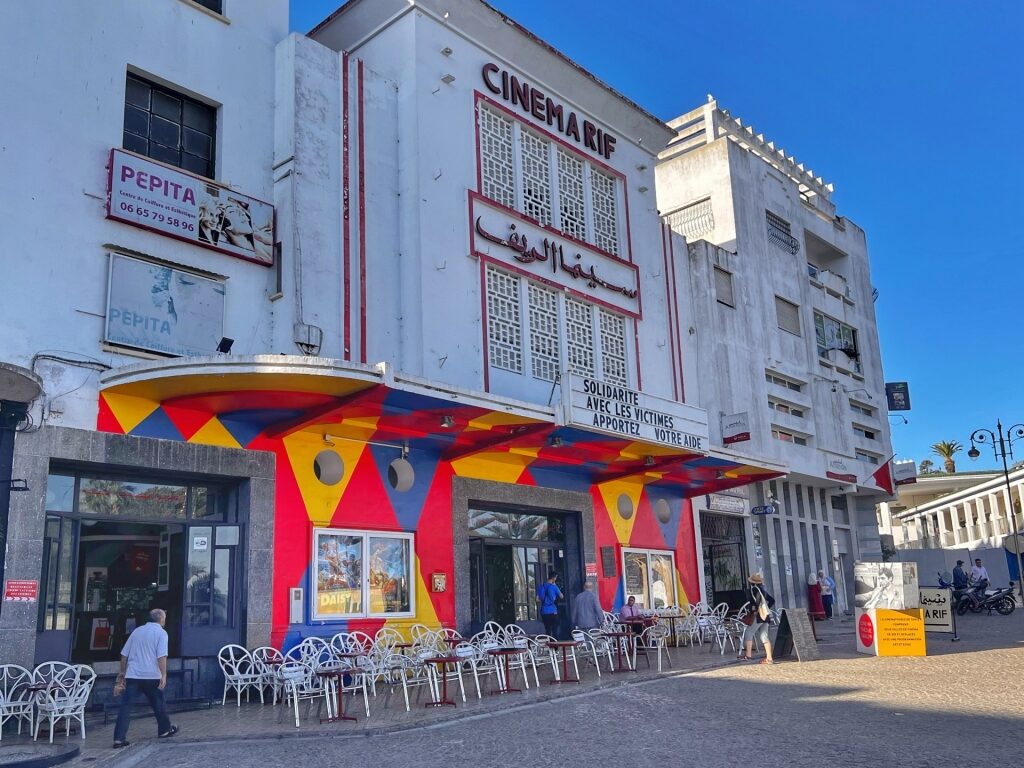
Grand Socco
Its chief attraction for keen shoppers is the Grand Socco – “socco” being a Spanish corruption of souk. That’s just outside the main gate; inside is the, well, smaller Petit Socco.
Between them and the other shops, you will find everything from jewelry and saffron, to rugs and leather. You’ll also stumble on plenty of small cafés where you can enjoy people-watching in true local style.
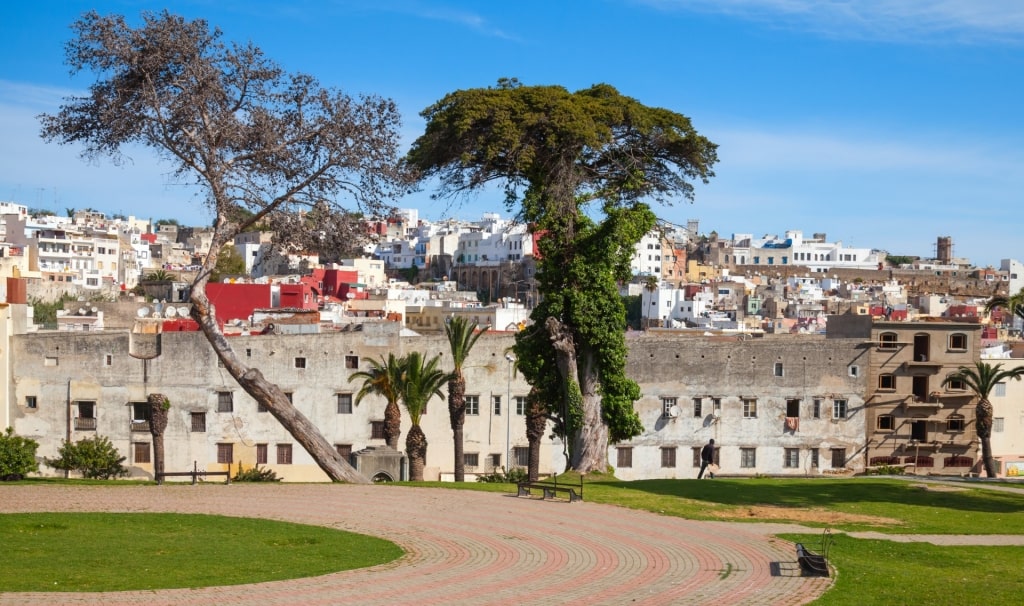
Mendoubia Gardens, Tangier
Highlights around the Grand Socco include the art-nouveau Rif Cinema, and the high, green-tiled minaret of the Sidi Bouabid mosque. The nearby Mendoubia Gardens are also worth seeking out if you need a green break amid some trees.
Climb to the Kasbah
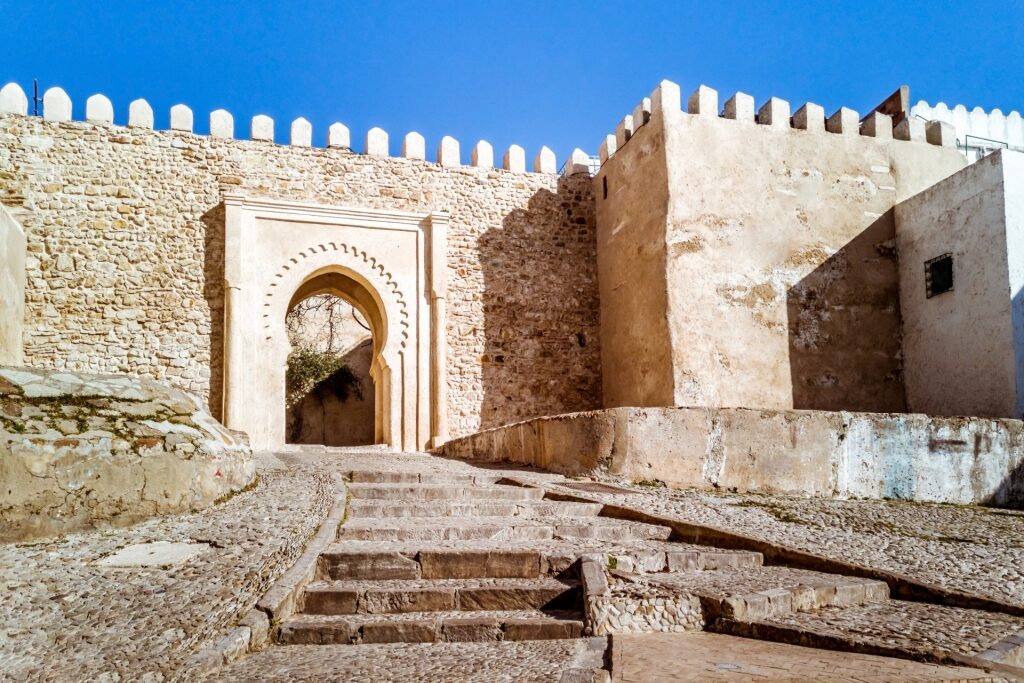
Kasbah, Tangier
The Kasbah is a former fortress on the hill overlooking Tangier’s Medina, which it was built to protect. Its honey-colored walls can be entered through one of several gates.
Inside is a place of cobbled alleys, blue and white houses, cafés and craft shops. The highest point is Place de la Kasbah, from where you can see out over the Medina and across to the Strait of Gibraltar.
The 17th-century Dar el Makhzen (“Sultan’s Palace”) is now the Kasbah Museum of Mediterranean Cultures. Part archaeological collection, part ethnographic display, it’s as much worth a visit for the opulent building itself.
Pay Your Respects at Tangier’s St. Andrew’s Church
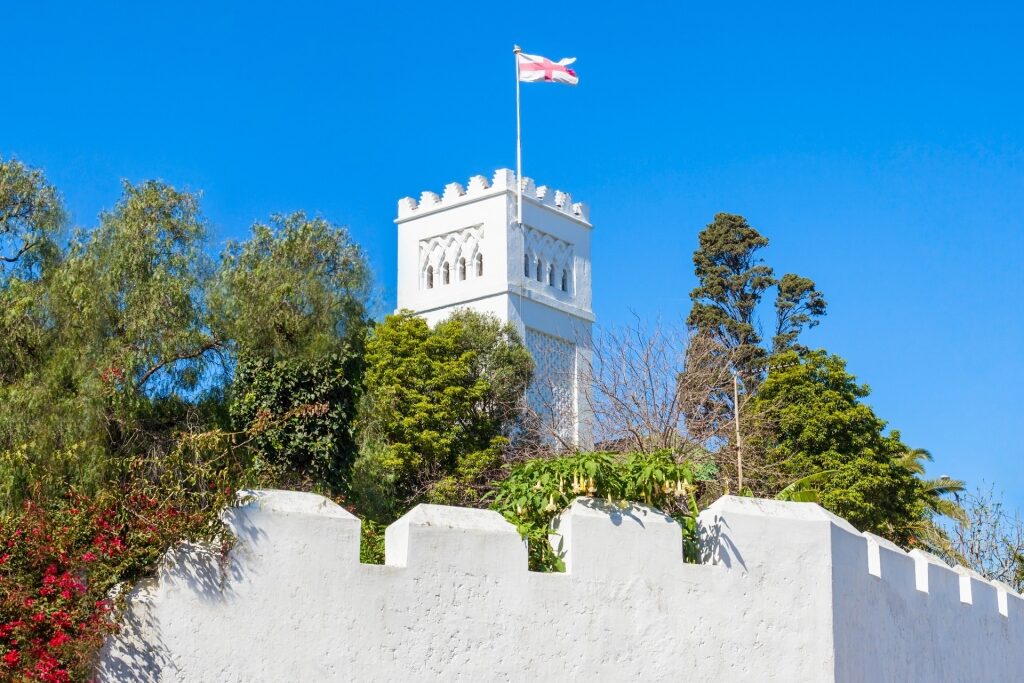
St. Andrew’s Church, Tangier
Painted by Henri Matisse, it may seem odd to find an Anglican church in Morocco. That is, until you remember that mainland Europe is merely ten miles away and Gibraltar not much more.
The style is English country church meets Maghreb, set in a tropical jungle. That produces lovely touches like a belltower-cum-minaret, and the Lord’s Prayer written in Arabic over the altar.
Lovers of old churchyards will be in their element here. The weathered gravestones are a book of British Empire history, from fallen military men to forgotten writers and poets.
Plunge Into El Jadida
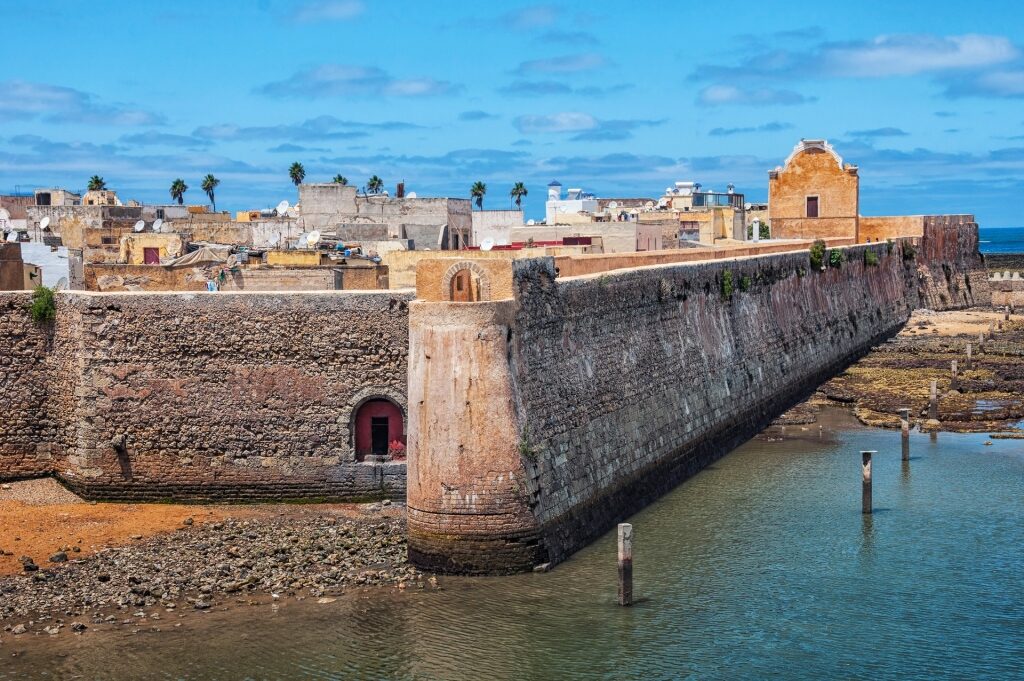
El Jadida
The seaside town of El Jadida, about 90 minutes from Casablanca, was built by the Portuguese in the early 16th century. They were eventually thrown out in 1769, leaving a fortified city that is now a Unesco World Heritage Site.
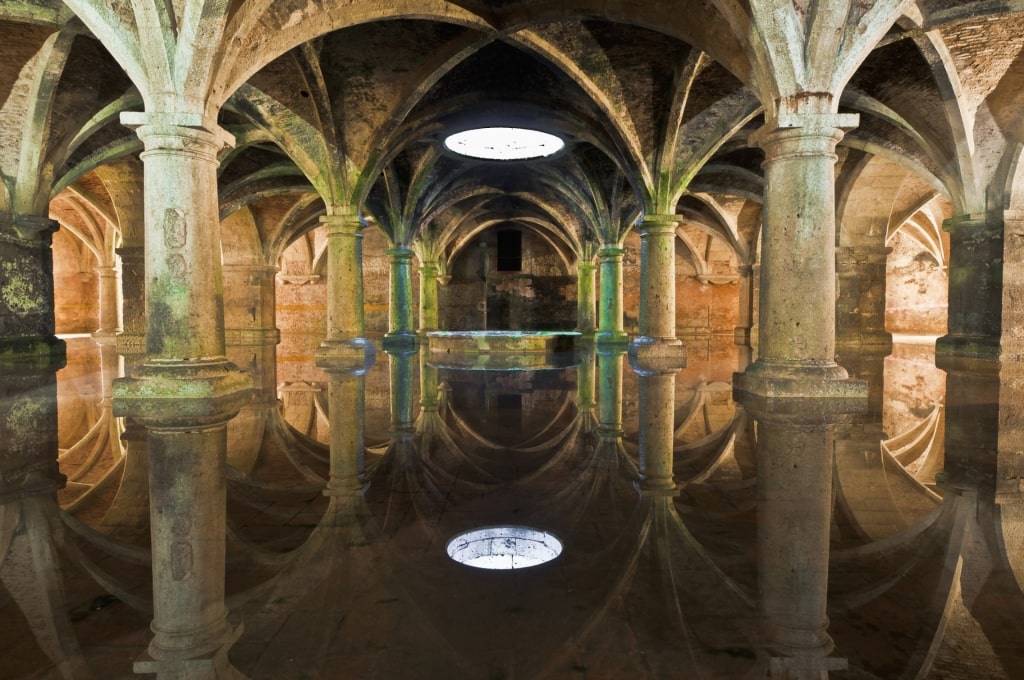
Portuguese Cistern, El Jadida
Ramparts and buildings such as a fortress, churches, and a synagogue survive. Most notable is an underground water reservoir, later used by Orson Welles in his version of Shakespeare’s “Othello”.
The atmospheric light from above, casting its light on the wet floor, was perfect for his dramatic vision. A vaulted ceiling, supported by sturdy pillars in different styles, still makes for a photographer’s delight.
Go on a Tangier Museum Crawl

Kasbah Museum, Tangier
Sadly, Tangier has now lost the Forbes (yes, that Forbes) Museum of Military Miniatures, but it still has other unusual museums. The Kasbah Museum is one, as is the American Legation.
Galerie d’Art Contemporain Mohamed Drissi, in the former British consulate of 1898, specializes in traveling exhibitions. That’s always pot-luck, of course, but contemporary Moroccan art is booming with the likes of Chrabia Tallal, Safaa Erruas, and Fouad Belamine.
Fondation Lorin, in a former synagogue, shows off historic Moroccan photos, posters and newspapers from the 1930s onward. It also hosts art exhibitions, with a small permanent collection.
Another highlight is the Musée de Carmen-Macein, a private art museum in the Kasbah. It has works from Picasso, Dalí and Max Ernst, among other major names.
Have a Café au Lait in Tangier’s Gran Café

Gran Café, Tangier Photo by Nicolas Vigier on Flickr, licensed under CC0 1.0
If you don’t come away from Morocco thinking you have drunk too much mint tea and strong coffee, you’re not really doing it right. One of the oldest watering holes in Tangier, Gran Café de Paris is a great place to linger on the terrace over a cup of either.
This venerable café has been frequented by the likes of Jean Genet, Jack Kerouac, William Burroughs and Tennessee Williams. More recently, it even had a starring role in a blockbuster movie.
The grand old dame of Boulevard Pasteur opened in 1927 and its style of leather chair and red-jacketed waiters seems unchanged since then. It was once voted among the World’s 50 Greatest Cafés, which sounds like a bucket list any coffee addict could get behind.
Picnic at Parc Perdicaris
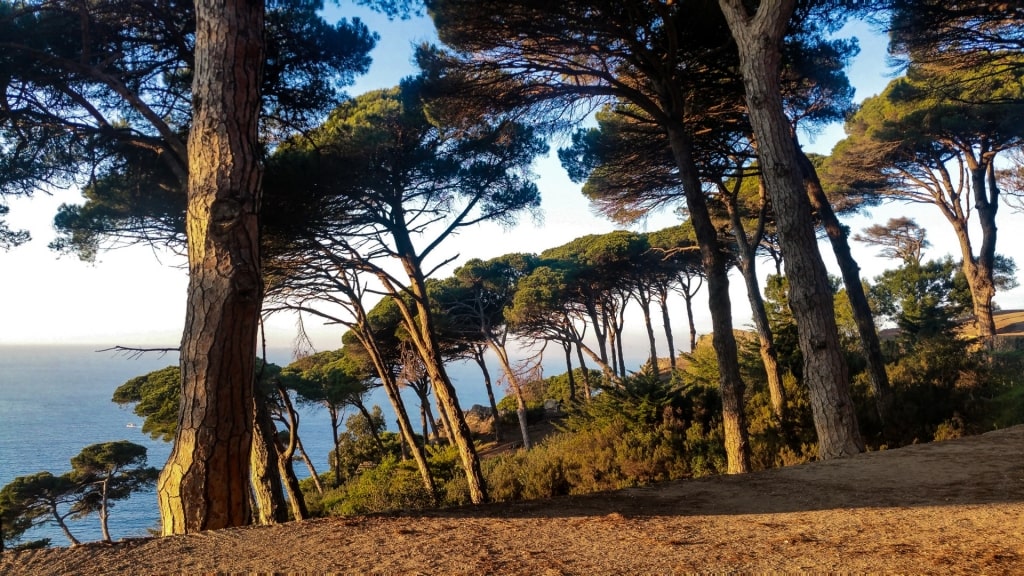
Parc Perdicaris, Tangier
This lovely park in Tangier is a great place to find shade and escape the North African sun. A cooling Atlantic breeze and great views over the ocean add to the appeal.
Former owner and playboy Ion Perdicaris was kidnapped in 1904 by Ahmed al-Raisuni, a Robin Hood-like figure. Subsequent events helped propel US President Roosevelt to re-election that same year.
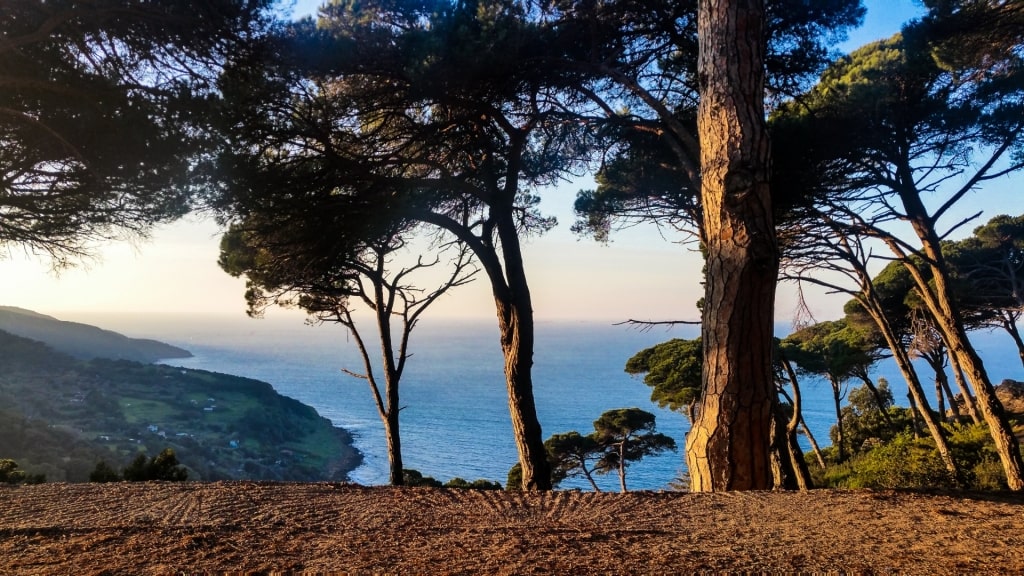
Parc Perdicaris, Tangier
Such exciting historic events seem very far away as you relax in the tranquil, tree-filled grounds of Perdicaris’ former home. With many food vendors around, you don’t even have to pack your own picnic.
See the “Moroccan Mona Lisa”
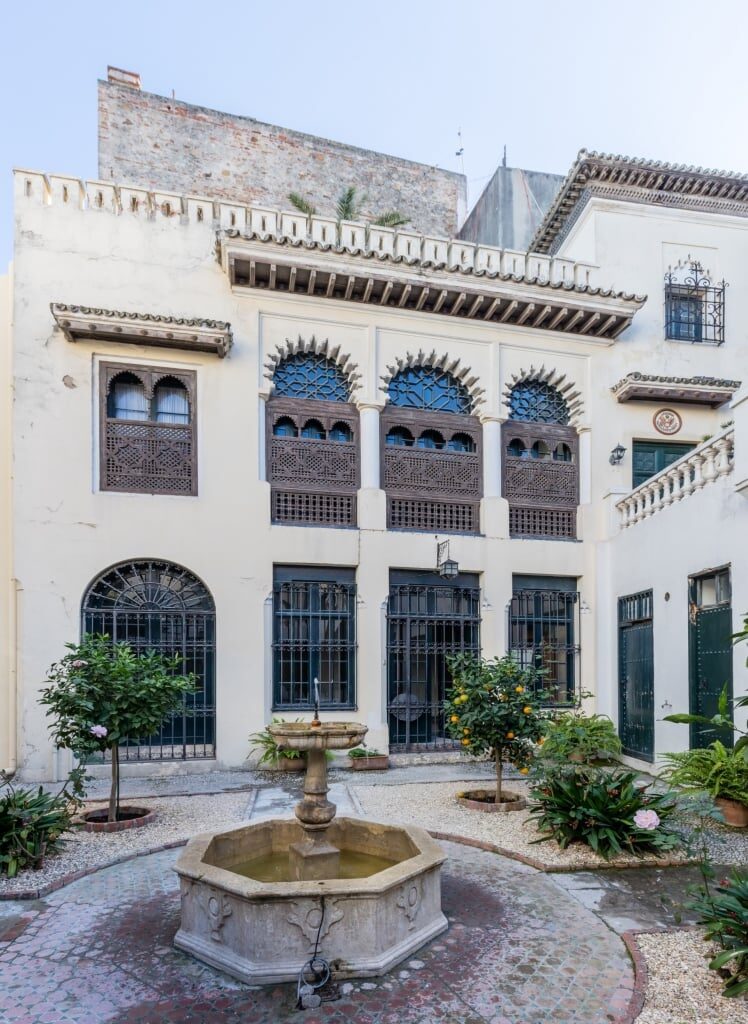
American Legation Museum, Tangier Photo by Diego Delso on Wikimedia Commons, licensed under CC BY-SA 4.0
In 1777, Morocco was the first country to recognize the new United States. In 1821, Tangier’s American Legation was the first property abroad ever acquired by the U.S. Government.
Now a museum, it has many interesting exhibits detailing that long history of friendship. Documents, photographs and paintings fill its galleries and corridors.
War artist James McBey’s enigmatic painting “Zohra” – the so-called “Moroccan Mona Lisa” — is a major highlight. Paul Bowles, author of “The Sheltering Sky”, and his wife Jane, author of “Two Serious Ladies”, also have two rooms dedicated to them.
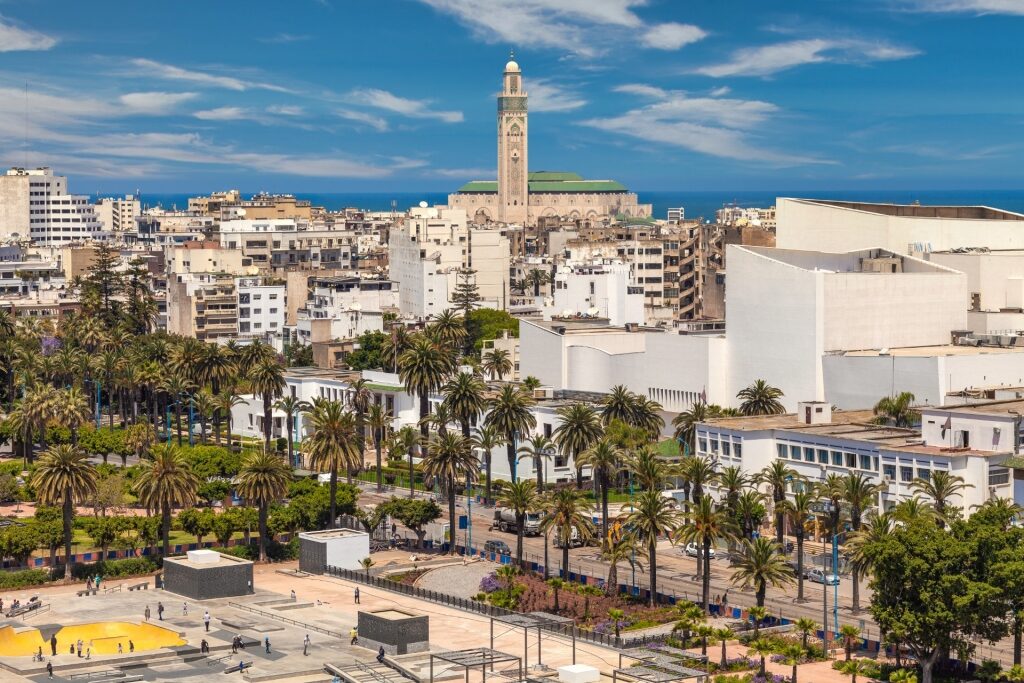
Casablanca
Do you want to start working your way through this list of the best things to do in Morocco? Then browse Celebrity’s cruises to Morocco to find your next unforgettable vacation.
